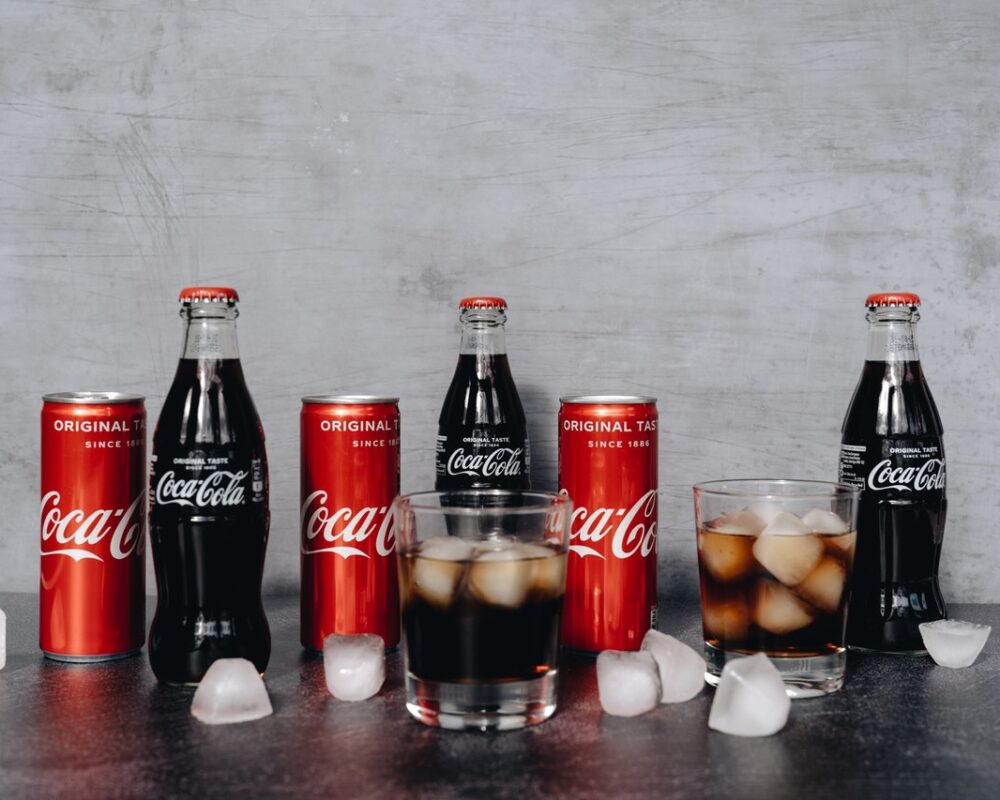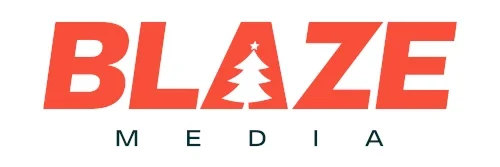You might not care that your LinkedIn profile still has your old logo on or that your email signature link doesn’t work or that your business cards have a wrong number on so you just scribble on it in pencil when you hand one out.
You might not care that your sales and marketing teams don’t communicate so there’s no clear brand voice being put out there, or that you haven’t corrected the typos on your flyer and your Google Ad campaign looks nothing like your Instagram page which, in turn, looks nothing like your Facebook page or your website.
You might not care, but the people out there…the people you want to engage with, to encourage to buy from you or shout about you to their mates, they care…they care A LOT!
Inconsistency can raise a red flag, making them question not only the legitimacy and trustworthiness of your business but your professionalism too.
The Impact of Brand Consistency
Every person who represents your business in any way must embody your brand and respect the guidelines that come with it – as well as understand that it builds brand recognition which can be the difference between a stack of sales or none at all.
The importance of maintaining brand consistency
Maintaining brand consistency across all platforms can increase revenue by up to 23 percent.
We’ll let that sink in for a minute and go grab a cuppa…

A trusted, eye-catching, clear brand is possibly the most valuable asset that you can possess as a business owner.
It can hook people in, create loyalty, recognition and spark conversations. It reflects your vision, your ethos – the reason you get out of bed and do what you do. It can influence how you and your business is regarded – by your team, your suppliers, your competitors, and most importantly, your customers – existing and prospective.
What is a brand?
Ah the million-dollar question! So, the ‘official’ definition is that a brand is:
“An identifying symbol, mark, logo, name, word, and/or sentence that companies use to distinguish their product from others. A combination of one or more of those elements can be utilised to create a brand identity.”
Here’s a fact for you (we like a good fact) the term “brand” was first coined as a way for cattle ranchers to identify their animals. Then, in the late 1880s, packaged goods like Coca-Cola started taking off and ‘brands’ were used to differentiate them from their competitors.

The Dictionary of Brand defines brand as “a person’s perception of a product, service, experience, or organization.”
Branding legend, Marty Neumeier defines brand by first laying out what a brand is not:
“A brand is not a logo. A brand is not an identity. A brand is not a product. A brand is a person’s gut feeling about a product, service, or organization.”
If a brand is subjective and perception is nine tenths reality then how is it possible to define what a brand is?
Your brand will mean something unique to every person who comes into contact with it – be it a current client, potential consumer, employee, competitor, or just within the world at large.
Some people connect with certain aspects of a brand, and their relationship can change depending on what they experience – negatively as well as positively.
Never has there been a better example of this than the current pandemic – think of brands who have been tainted because of bad decisions that have been made or ill-judged comments posted online.
Put as simply as possible; nowadays a brand is the sum of the consumers’ experiences and interactions. Every touchpoint matters.
Every moment counts.
Every. Single. One.

An omnichannel approach
So now you we know what a brand is (or isn’t) how important is it that every member of your team lives and breathes that brand in whatever role they undertake?
You guessed it…VERY!
Creating an authentic, engaging brand isn’t just about a cool logo and matching templates to use across your social channels.
Every person who represents your business, in any way, must embody your brand and respect the guidelines that come with it – as well as understanding that it builds brand recognition which can be the difference between a stack of sales or no sales at all.
That means your customer facing team, your marketing team, back of house, executives, directors, interns, work placements – every single person who provides a touch point for a potential or existing client.
This requires tight brand management and excellent communication; your brand guidelines should be integrated into your recruitment and onboarding process for all team members as well as communicated regularly in briefs, project boards and more.

The perils of going rogue
Initiative is a great thing and you want to encourage your team to think for themselves and seek out new opportunities; especially in this ever-changing World.
BUT with great responsibility comes great power – and if you don’t communicate clearly what your brand is, why it’s important and how elements need to be used – that initiative can do you great damage!
A lack of consistency and guidance in how to use brand elements can lead to the creation of special or ad hoc elements and materials.
This often means incorrect logo use, wrong colour and font specifications, inappropriate language, typos and low-quality designs which catch the eye for all the wrong reasons.
If your brand is diluted in such a way then the resultant poor quality and errors lead to a bad image of the company being promoted which diminishes consumer trust in your brand.
A poor brand experience will can affect your bottom line because it reduces customer trust, discourages buying, and leads existing customers to avoid recommending you to others.
Even the most loyal client can be swayed by a bad review and it’s never been easier to search out, engage with and buy similar products and services, and often it is just the brand’s reputation that swings the purchase its way.
A single bad customer experience can override any number of previous positive experiences.

Examples of poor brand consistency
An example of bad brand consistency doesn’t just have to be when the big-name brands make a blunder that appears in the newspapers. Like when Coca-Cola brought out ‘New Coke’, or when Cardiff City Football Club (the bluebirds!) tried to shift their teams’ colours from blue to red.
Brand consistency also means the little things, like is your logo always the right colour? Do you use the same font in all your writing? Can customers go to your website and easily find what they need to find because your website layout is consistent and easy to understand?
Aside from your design, you’ve then got your content and customer interactions. Every decision you make should be driven by clear brand values, and this includes how you engage with your target audience.
Never has there been better examples of poor brand consistency than during the coronavirus pandemic – think of brands who have been tainted because of bad decisions that have been made or ill-judged comments posted online.
At the end of the day, all you can do is stay true to your brand’s values and give your customers a reliable, consistent service that they’ll never forget.
With helping over 016 clients to achieve their goals and cut CPA on average by 50% in 3 months, our Paid Social Media services ensure your messaging stays cohesive and impactful across platforms.

Top takeaways
Brand consistency = brand recognition
As a company, being instantly recognisable is highly lucrative. Think of successful brands like Nike, Ferrari, Chanel…you can recognise them from a simple logo, a style of advert or even a big red truck covered in lights that comes out once a year!
With digital marketing becoming more and more influential you need to ensure you’re thinking like the big hitters and embracing your brand and what it stands for in every message you put out there whether it’s an email to a sales pitch or a marketing campaign; it must be steeped in everything that makes your business different to the next.
By being consistent in your messaging you can set your brand apart from your competitors, which is especially valuable in a highly competitive and saturated market.
It helps build trust
Brand recognition is about more than just promoting your product or service. It’s about more than a pretty logo or a catchy jingle.
It’s about engaging people, sharing a common purpose, adding value and building trust from the bottom up – and never forgetting how important that is.
More and more people, especially Millennials, are seeking an experience – they want to feel like they belong and they’ll happily question anything that doesn’t seem authentic or trustworthy.
Buying has become more of an emotional journey as opposed to a standard exchange which is why it’s so important for every team member to understand and deliver on your vision.
This isn’t a quick fix; it takes time, lots of time and patience and perseverance. When it’s done right though, even the slightest hint of your brand will affect those same positive emotions in your audience.
Brand consistency helps to build trust and loyalty since people will know exactly what to expect when they buy your product or use your service.
It evokes positive emotions about your brand
Consistently communicating positive messages can also help evoke positive emotions from your target audience. And the best thing is that your audience will, over time, begin to associate these positive emotions with your brand.
Just imagine the impact on your business when exposure to your brand always makes people feel happy.
You’ll beat your competition
Imagine you’re off out for a coffee and you walk down the street and there are 2 cafes to choose from. Both sell exactly the same coffee at exactly the same price.
The one on the left has a beautifully painted façade, plants in the window, a professional sign, water bowls outside for dogs, clean tables and a welcoming smile when you approach the door.
The one on the right has rotten windowsills, a handwritten sign saying no pets allowed, letters missing from the sign, dirty plates covering the tables and rather pungent smell as you push the door open.
Which one would you choose?
You choose the one that has an owner who cares and takes pride in what they do and how they look (at least most of us would)
The experience you offer from the first point of contact enables you to stand out from the crowd and the more people want to be part of what you have to offer, the more successful your business will be.
At Blaze Media, we offer a completely free brand consultation to help you start making the changes that will help your business on to bigger things.
Call us now on 0151 3193418 or get in touch with our branding experts to book your session.


